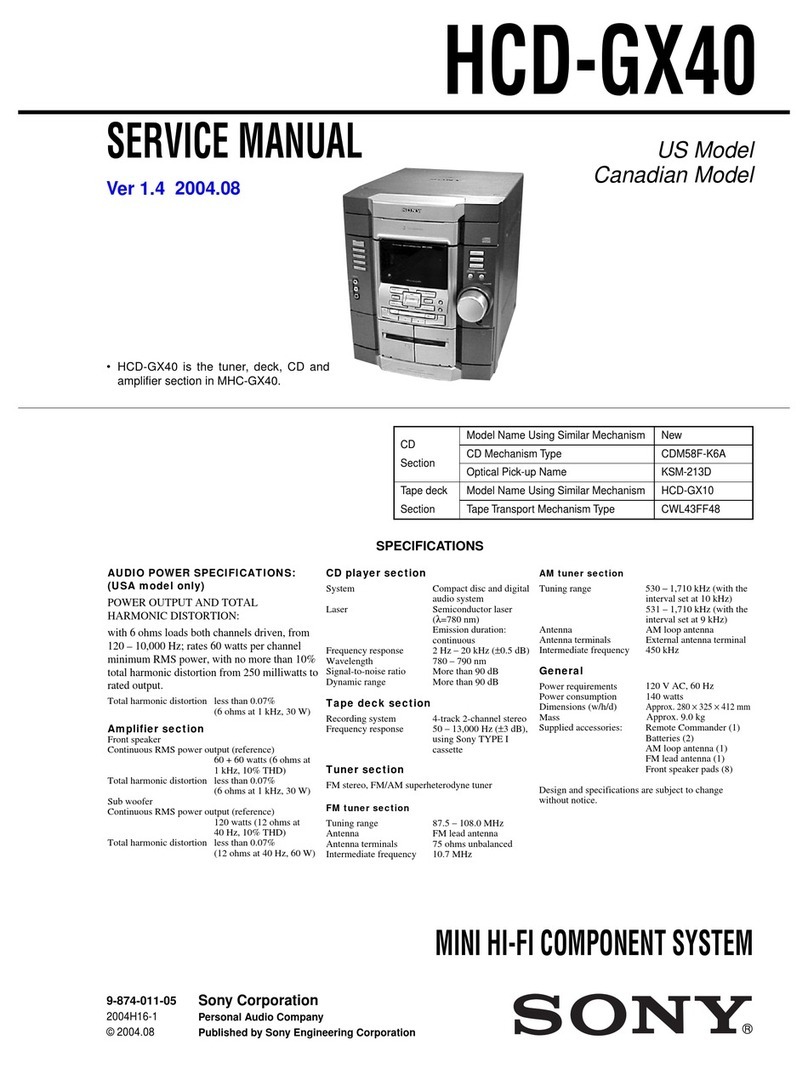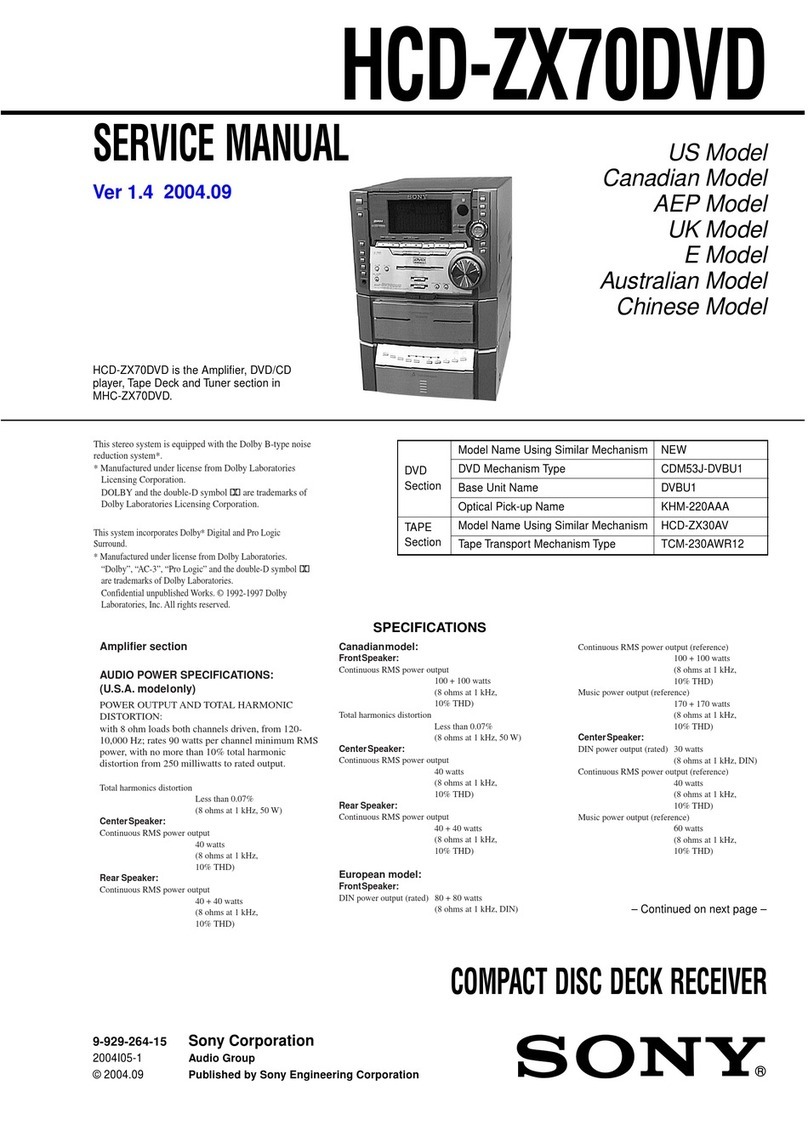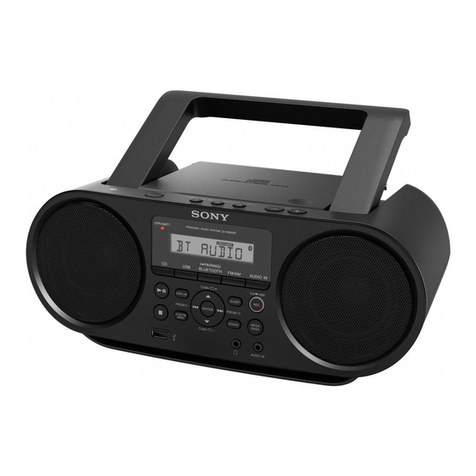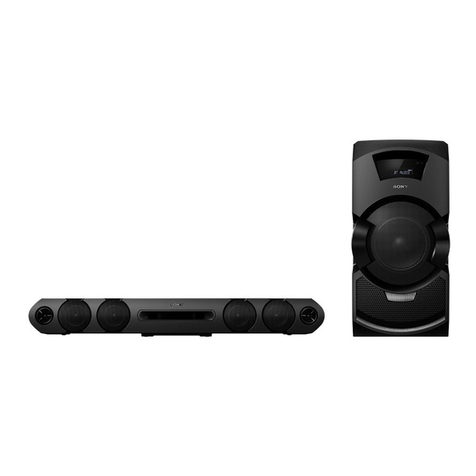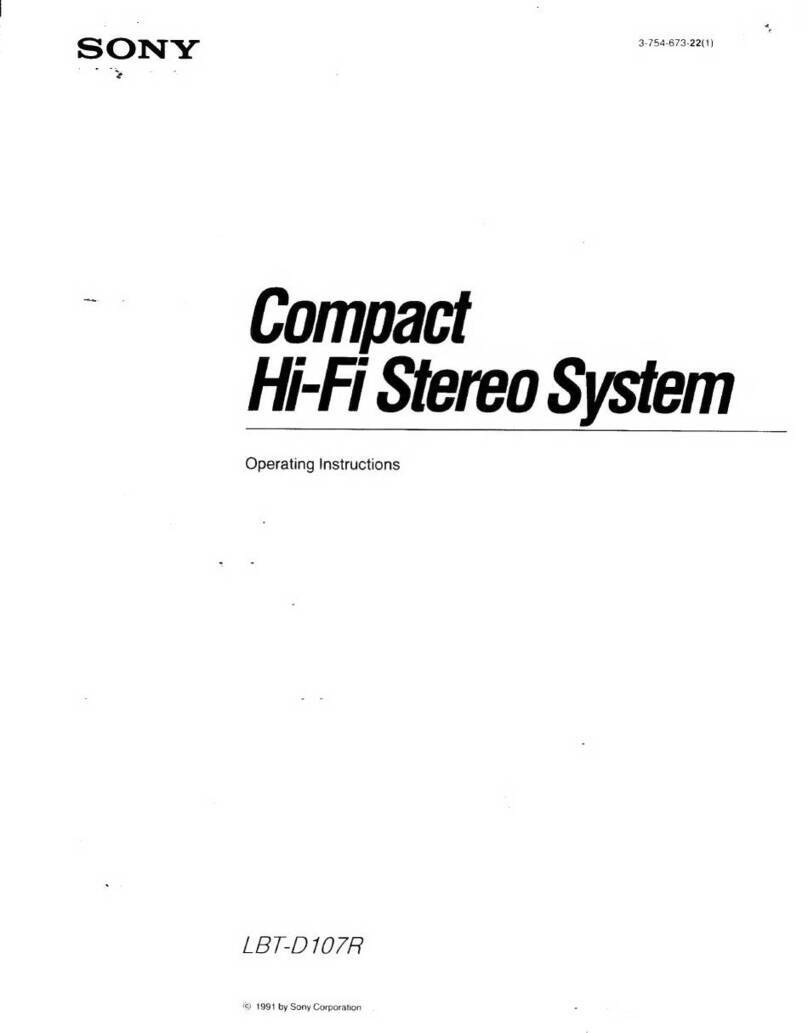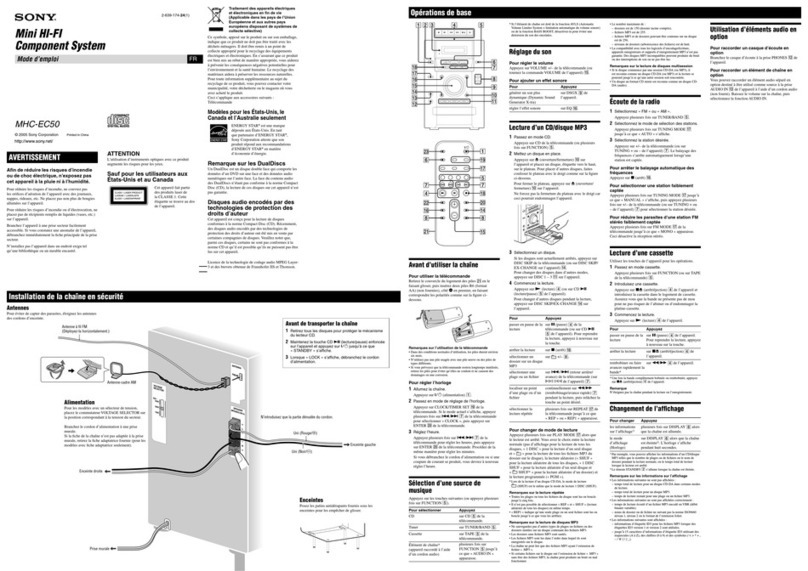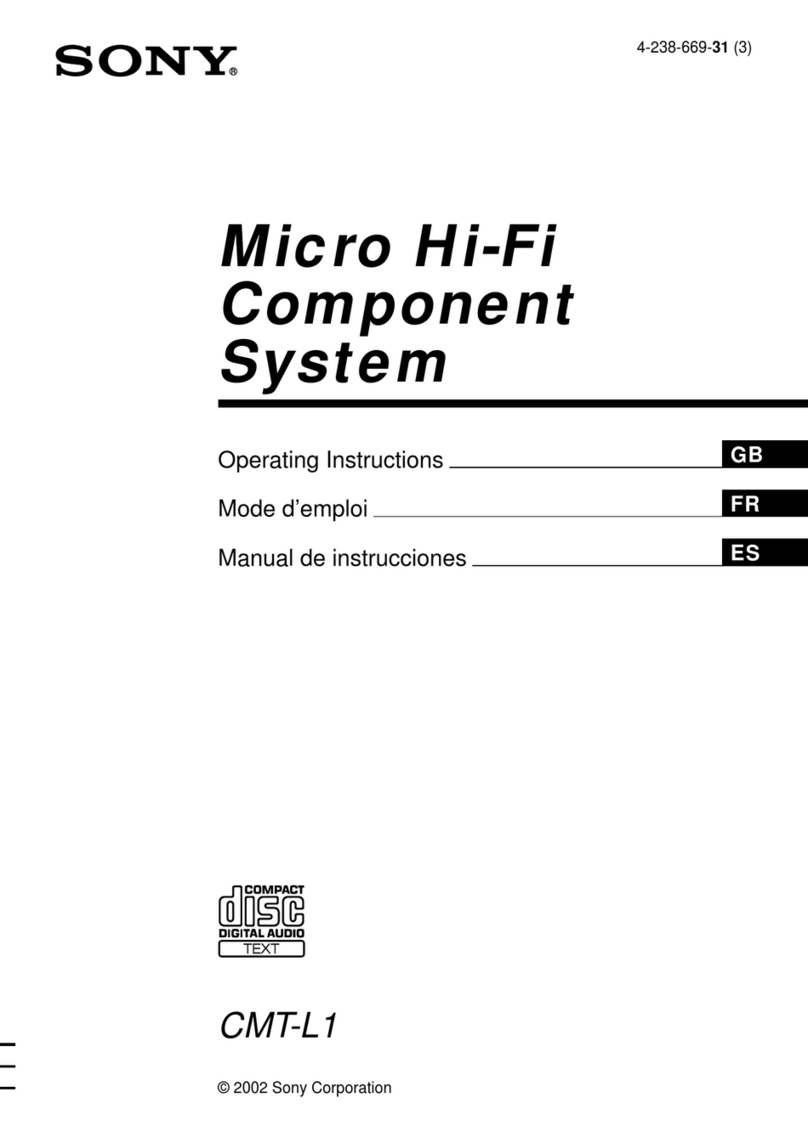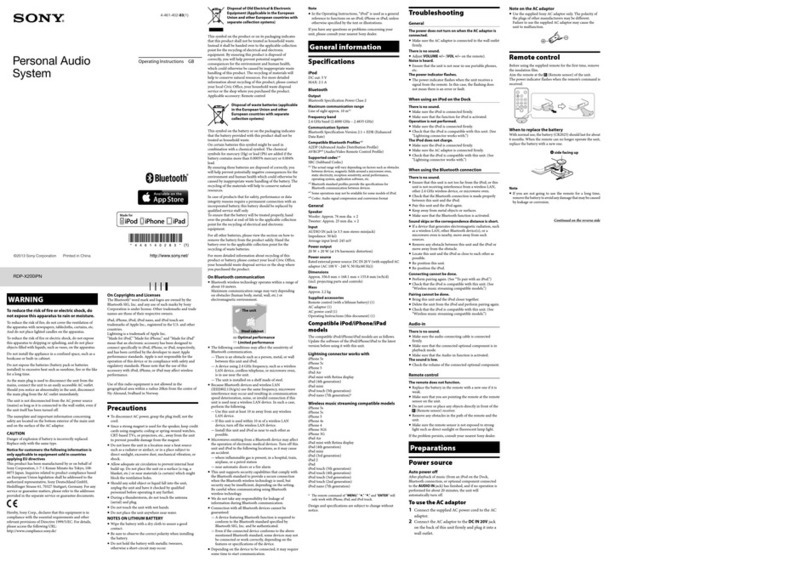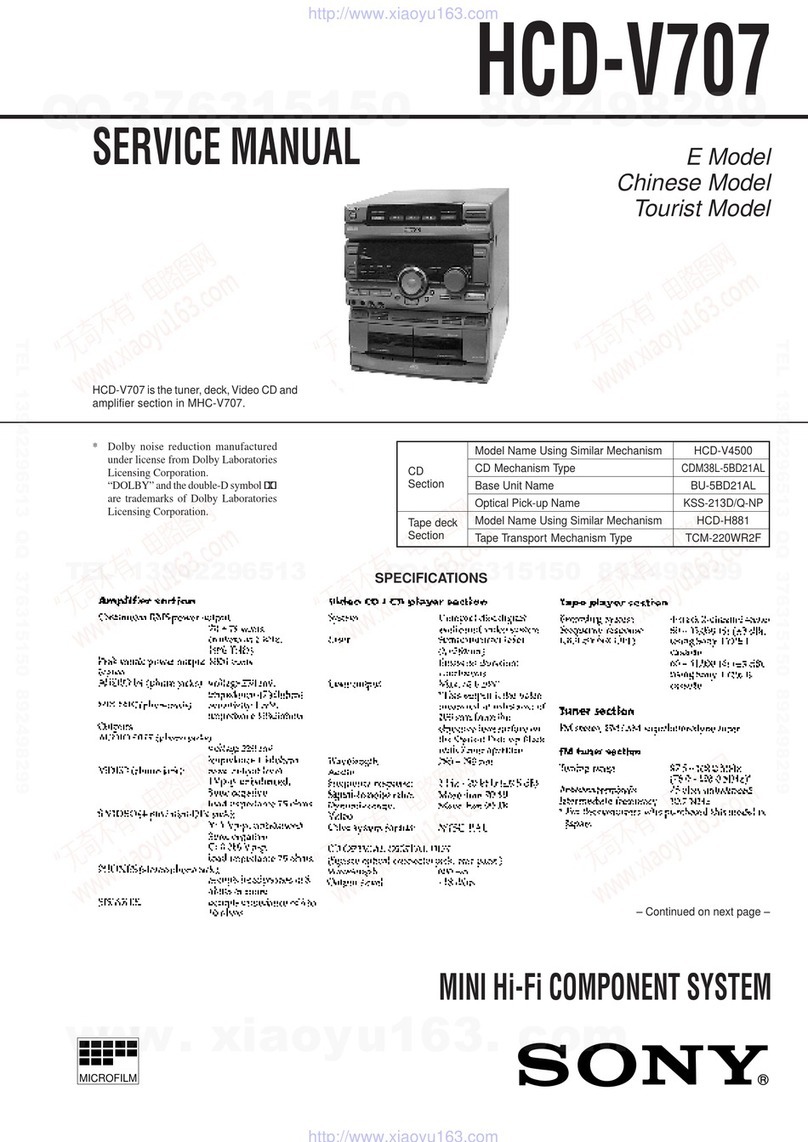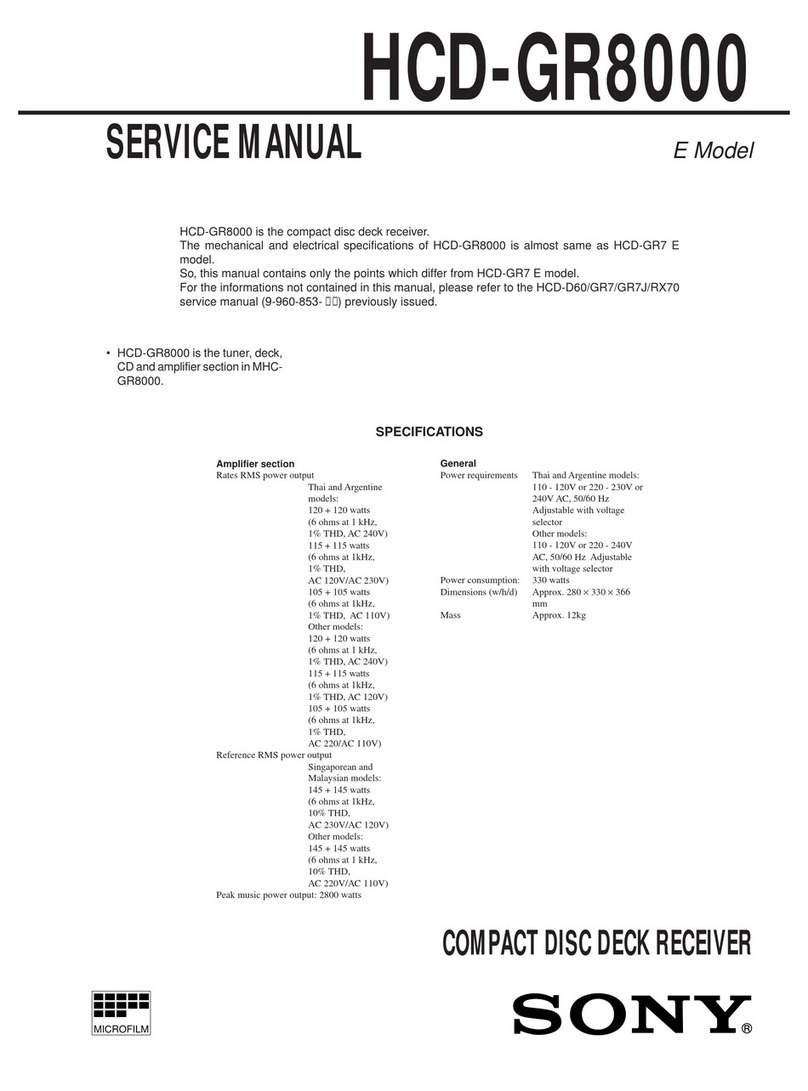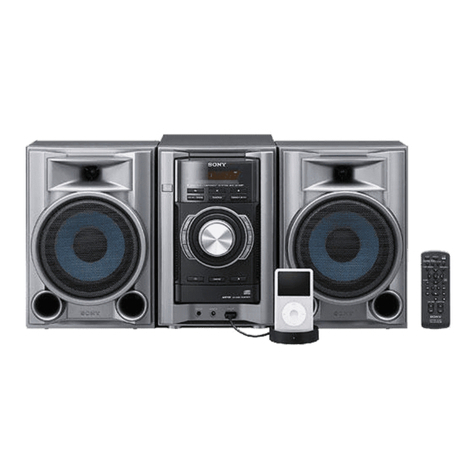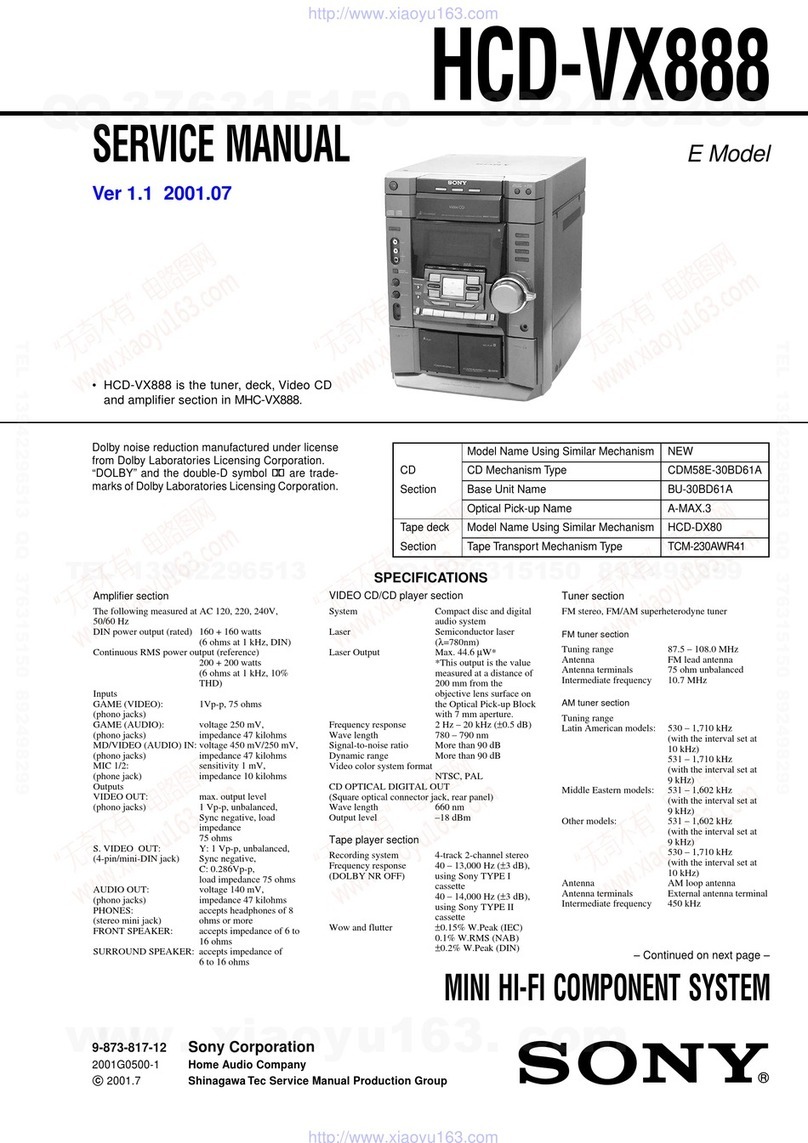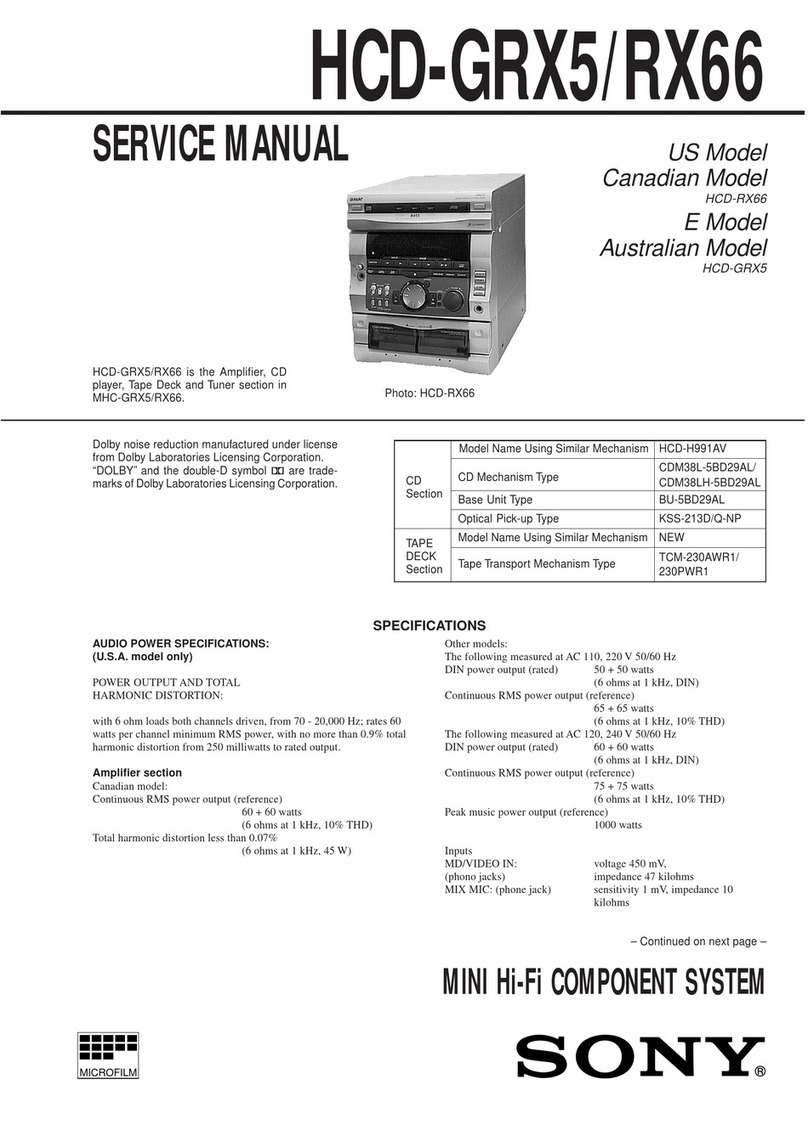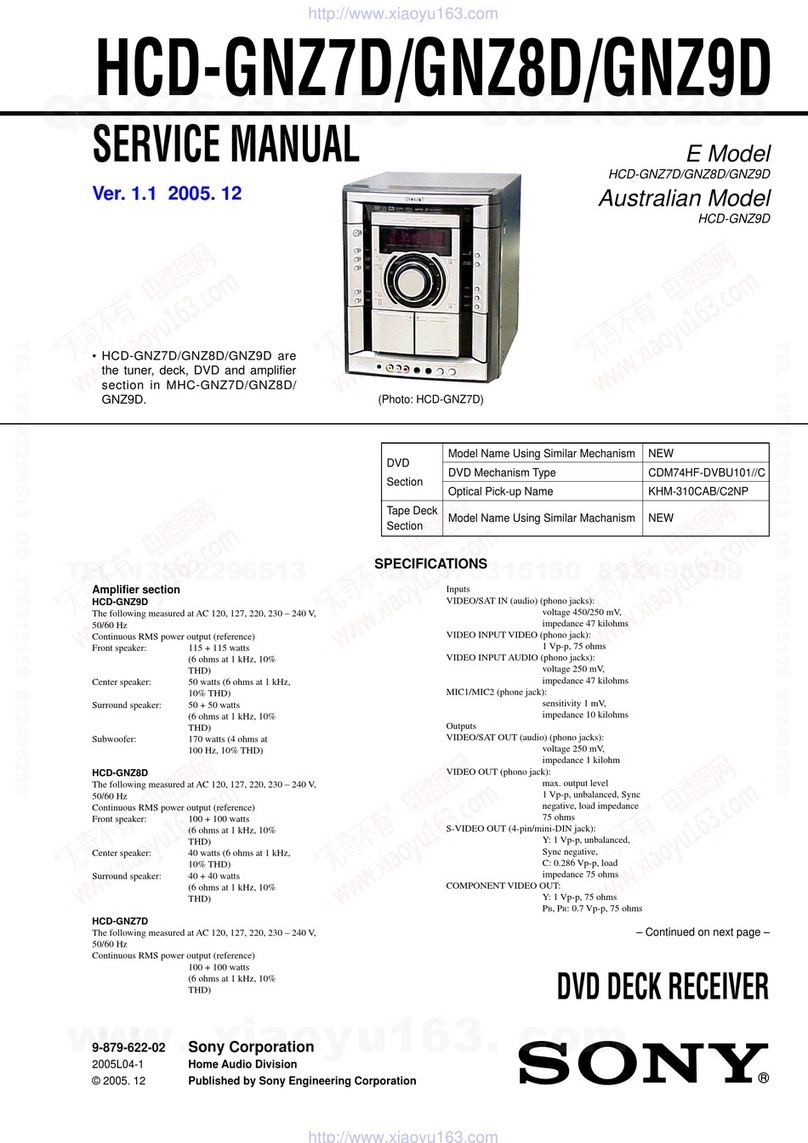3
NOTES ON HANDLINGTHE OPTICAL PICK-UP BLOCK
OR BASE UNIT
The laser diode in the optical pick-up block may suffer electrostatic
break-down because of the potential difference generated by the
charged electrostatic load, etc. on clothing and the human body.
During repair, pay attention to electrostatic break-down and also
use the procedure in the printed matter which is included in the
repair parts.
The flexible board is easily damaged and should be handled with
care.
NOTES ON LASER DIODE EMISSION CHECK
The laser beam on this model is concentrated so as to be focused on
the disc reflective surface by the objective lens in the optical pick-
up block. Therefore, when checking the laser diode emission, ob-
serve from more than 30 cm away from the objective lens.
LASER DIODE AND FOCUS SEARCH OPERATION
CHECK
Carryout the “S curve check” in “CD sectionadjustment” and check
that the S curve waveform is output four times.
TABLE OF CONTENTS
1. SERVICING NOTE .......................................................... 4
2. GENERAL .......................................................................... 7
3. DISASSEMBLY
3-1. Back Cover and Case ............................................................ 9
3-2. Panel Board and Stabilizer .................................................... 9
3-3. AMP Block ......................................................................... 10
3-4. CD Block ............................................................................ 10
3-5. Motor ASSY and CAM ....................................................... 11
3-6. Base Unit............................................................................. 11
3-7. Main Board and Power Board ............................................ 12
4. ELECTRICAL ADJUSTMENT ..............................13
5. DIAGRAMS
5-1. Circuit Boards Location ...................................................... 14
5-2. Printed Wiring Board – Main Section –.............................. 16
5-3. Schematic Diagram – Main (1/3) Section –........................ 18
5-4. Schematic Diagram – Main (2/3) Section –........................ 19
5-5. Schematic Diagram – Main (3/3) Section – ........................ 20
5-6. Printed Wiring Board – LED/Loading/SW Section – ......... 21
5-7. Schematic Diagram
– LED/Loading/SW Section Section – ............................... 21
5-8. Printed Wiring Board – AMP Section – .............................. 22
5-9. Schematic Diagram – AMP Section –................................. 23
5-10. Printed Wiring Board – Panel Section –........................... 24
5-11. Schematic Diagram – Panel Section – ............................. 25
5-12. Printed Wiring Board – Power Section – ......................... 26
5-13. Printed Wiring Board – Power Section – ......................... 27
5-14. Printed Wiring Board – REG Section –............................28
5-15. Schematic Diagram – REG Section – .............................. 29
5-16. IC Block Diagrams ........................................................... 30
5-17. IC Pin Functions ............................................................... 32
6. EXPLODEDVIEWS
6-1. Front and Case Section ....................................................... 36
6-2. Chassis Section ................................................................... 37
6-3. Mechanism Section ............................................................. 38
6-4. Base Unit Section................................................................ 39
7. ELECTRICAL PARTS LIST .................................40
